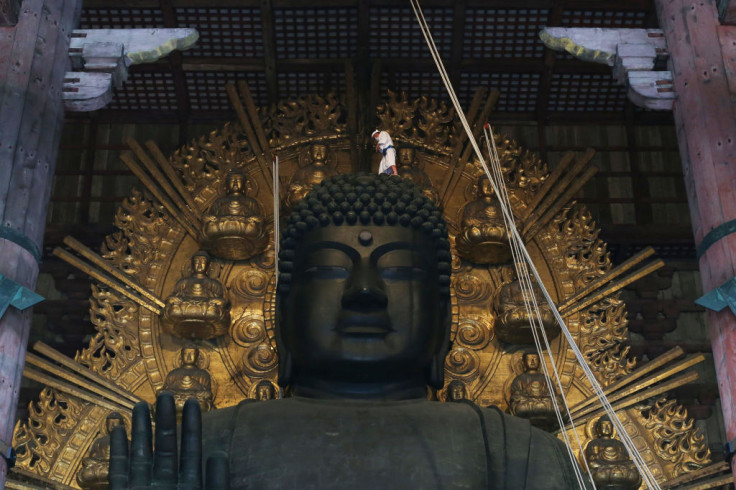Massive 1,400-year-old banquet hall uncovered in Japan's ancient capital city
The banquet hall was likely used for various rituals and sumo tournaments during the seventh century.

Archaeologists have uncovered evidence of a 1,400-year-old banquet hall used by the nobility in Asuka village, the ancient capital city of Japan.
The oblong-shaped site dates back to the period between 590 AD and 710 AD and features 16 pits arranged in a symmetrical pattern. These holes, would have held massive wooden pillars, keeping a 63-foot long banquet hall in place, the Japanese newspaper Asahi Shimbun reports.
Initially, experts found nine pits and thought the site could be a warehouse or lodge. However, the discovery of seven additional pits recently confirmed that these are the remains of an ancient banquet hall.
The find was announced by the education board of the Asuka government on 21 February.
Kanekatsu Inokuma, an archaeology professor at Kyoto Tachibana University, says the banquet hall was likely used for various rituals and sumo tournaments during that period.
According to him, the finding falls in line with historical accounts of banquets hosted for the Emishi and Hayato people, who, along with other groups, travelled to the site from the outer edges of the kingdom for entertainment. Nihon Shoki, an 8th century book detailing the history of classical Japan, also describes the same use of the banquet hall.
The banquet hall, dubbed Tsukinoki no Hiroba in the book, is also believed to be where young Emperor Tenji, the 38th emperor of Japan, met Nakatomi no Kamatari for the first time. The duo later went on to stage a coup for bringing in reforms and strengthening the central government.
Among other things, the archaeologists found an ancient fountain in the small village, a few hundred metres away from ancient the banquet hall.
7th-century site yields traces of grand banquet hall for nobility:The Asahi Shimbun #Japan #Nara #Asukaruinshttps://t.co/rYXMASlAKf
— Asahi Shimbun AJW (@AJWasahi) February 22, 2018





















